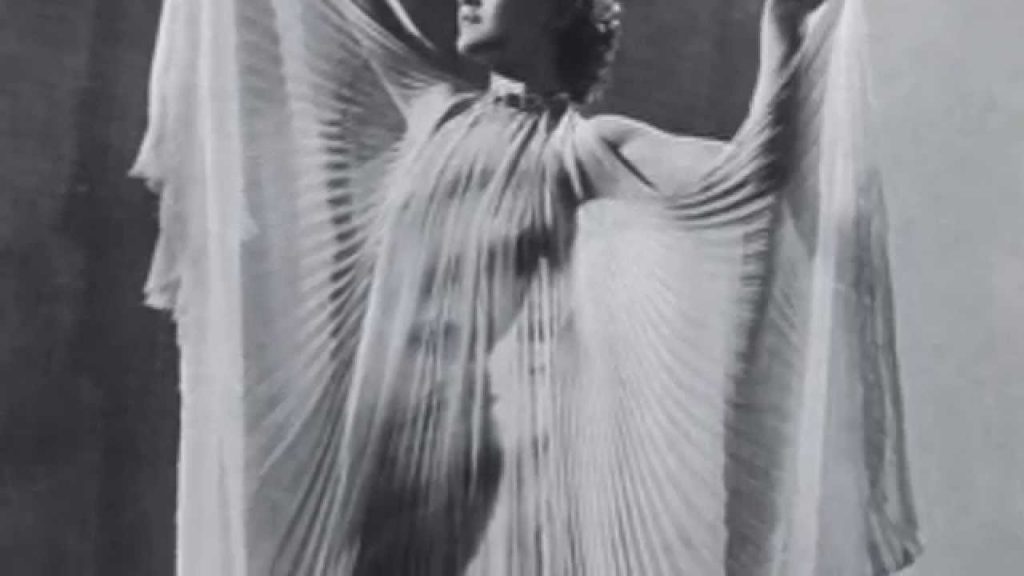Join Now

Leadership
Sustainability
CSR & Impact
Talent/People/Culture
Innovation
Digital Transformation
Economic Priorities

Called the “Queen of the bias cut” and “the architect among dressmakers”, Vionnet is best known today for her elegant Grecian-style dresses and for popularising the bias cut within the fashion world. Madeleine Vionnet is considered one of the most influential fashion designers of the 20th century. Vionnet inspired fashion designers such as Marcelle Chaumont, mother of French author Madeleine Chapsal, to whom she served as godmother.
Madeleine Vionnet was born on 22 June 1876 into a poor family in Chilleurs-aux-Bois, Loiret. Vionnet moved with her father to Aubervilliers at the age of five. Having already left school, Vionnet began her apprenticeship at age twelve as a seamstress alongside members of the garde champêtre. At 18, after a short marriage and the loss of her young child, she left her husband and went to work in London as a hospital seamstress.While in London, Vionnet worked as a fitter for Kate Reily.
Influenced by the modern dances of Isadora Duncan, Vionnet created designs that showed off a woman’s natural shape. Like Duncan, Vionnet was inspired by ancient Greek art, in which garments appear to float freely around the body rather than distort or mold its shape. Her style changed relatively little over her career, although it became a little more fitted in the 1930s.
During the twenties Vionnet invented the bias cut, a technique of cutting fabric diagonal to the grain of the fabric, causing it to cling to the body while moving with the wearer. Vionnet’s new technique revolutionized women’s clothing and she was given the title of “architect among dressmakers”.She recreated full garments in chiffon, silk, or Moroccan crepe on life-size models. Vionnet used materials such as crêpe de chine, gabardine, and satin to make her clothes; fabrics that were unusual in women’s fashion of the 1920s and 30s. She ordered fabrics two yards wider than necessary to accommodate draping, creating clothes – particularly dresses – that were luxurious and sensual but also simple and modern. Characteristic Vionnet styles that clung to and moved with the wearer included the handkerchief dress, cowl neck, and halter top.
While known for creating high fashion luxury pieces, Vionnet began to focus on mass production, ready-to-wear clothing. Vionnet began to design clothes taken from the catwalk and mass produce them revolutionising the fashion industry.Vionnet still focused on luxury garments and haute couture.
While in London she developed her sewing skills training with Kate Reilly, a supplier to the British Royal family.Vionnet eventually returned to Paris, working for six years in the fashion house Callot Soeurs as a toile maker. After a disagreement with a manager of the house, Vionnet threatened to leave her post. She was convinced to stay by the eldest of the Callot sisters, Marie Callot Gerber, after being offered a promotion that would mean improvising draped designs on a live model with Gerber herself.
Between 1907 and 1911, she had her big break when Jacques Doucet, one of the major pre-World War I figures of French couture, with whom Paul Poiret had worked, lured her away from Callot as he needed someone who could rejuvenate his ateliers to attract younger clients than the ageing female customers. Her first collection was shown on models wearing neither corsets or shoes.
Her campaign against the copyists began in 1921 with the creation of The Association for the Defence of Fine and Applied Arts. Vionnet’s bias cut clothes dominated haute couture in the 1930s,setting trends with her sensual gowns worn by such internationally known actresses as Marlene Dietrich, Katharine Hepburn, Joan Crawford and Greta Garbo.
Living to almost 100 years old, Vionnet died in 1975. She has continued to inspire and is adored by contemporary designers including Azzedine Alaia, Issey Miyake and Vivienne Westwood.
In 1912, Vionnet opened her own-name fashion house ” Vionnet” at 222 rue de Rivoli. Within the two years before World War I, she had gathered a loyal clientele but there was no question of her continuing her trade during the war years, which she spent largely in Rome.Although it was forced to close in 1914 at the outbreak of the First World War, it reopened after the war and Vionnet became one of the leading designers in Paris between the Wars. Re-establishing the house in 1923, Vionnet opened new premises on Avenue Montaigne, which became known as the “Temple of Fashion”.In 1925, Vionnet’s fashion house expanded with premises on Fifth Avenue in New York City. She sold designs purchased off the peg and adapted to the wearer.
Her business had expanded so much that she was forced to move to bigger premises at 50 Avenue Montaigne, where she was able to employ over 1,000 people. She rarely saw her employees and hardly ever visited her 26 ateliers. Her time was spent in her own study, to which head seamstresses were bidden to show their latest ideas.Vionnet’s vision of the female form revolutionized modern clothing, and the success of her unique cuts assured her reputation.She fought for copyright laws in fashion. She instituted what, at the time, were considered revolutionary labor practices: paid holidays and maternity leave, day-care, a dining hall, and a resident doctor and dentist for her workers. Vionnet created some 12,000 garments over the course of her career. The onset of World War II forced Vionnet to close her fashion house in 1939, and she retired in 1940.
There was a second coming, in 1977, when Diana Vreeland created an exhibition of French fashion from between the wars under the title, “The 10s 20s 30s.” It, and the accompanying book and photography by Irving Penn, called Inventive Paris Clothes 1909-1939 changed attitudes to early-20th-century fashion in general, but especially to Madeleine Vionnet.
https://en.wikipedia.org/wiki/Madeleine_Vionnet
https://www.businessoffashion.com/articles/education/madeleine-vionnet-1876-1975
http://www.catwalkyourself.com/fashion-biographies/madaleine-vionnet/